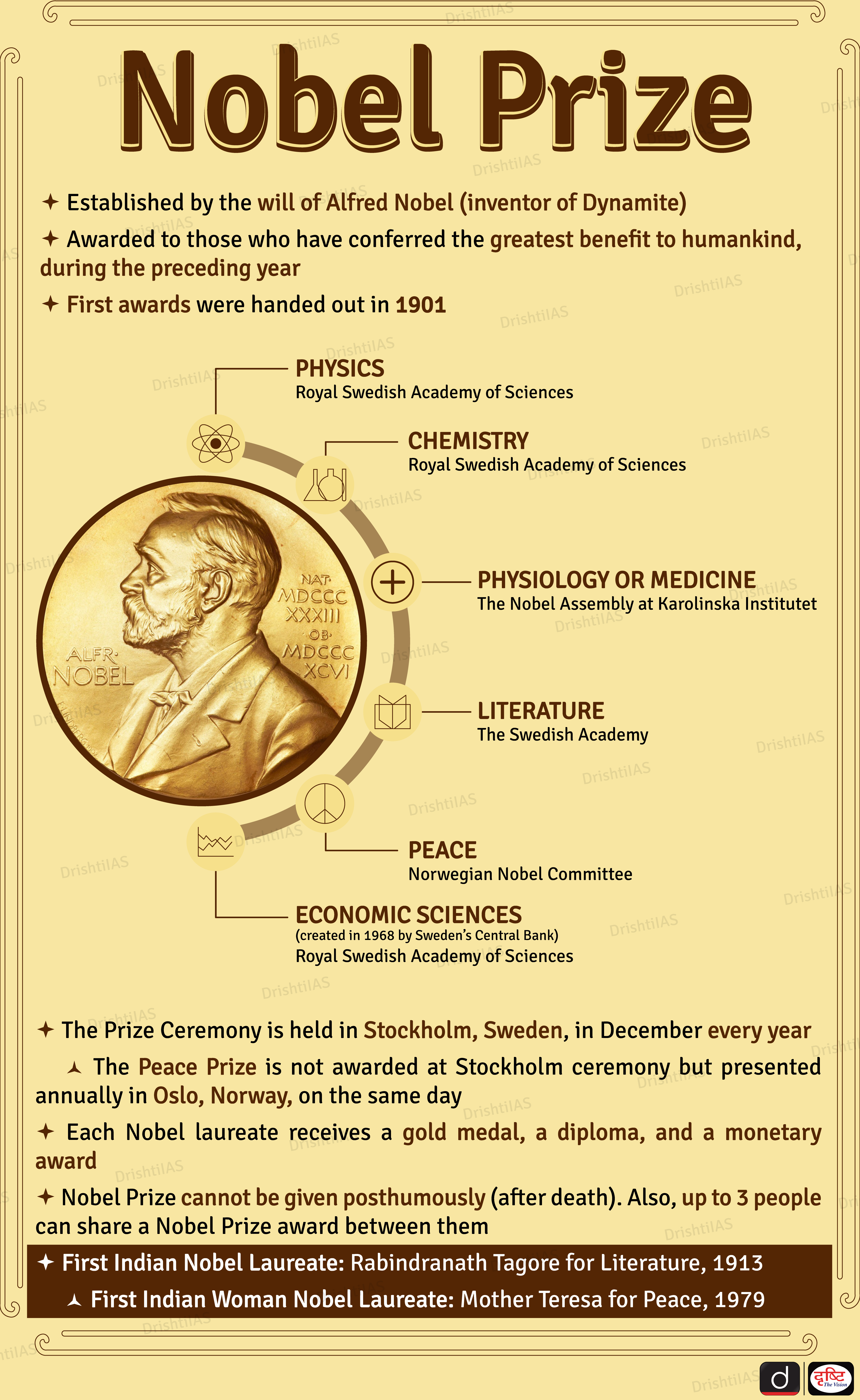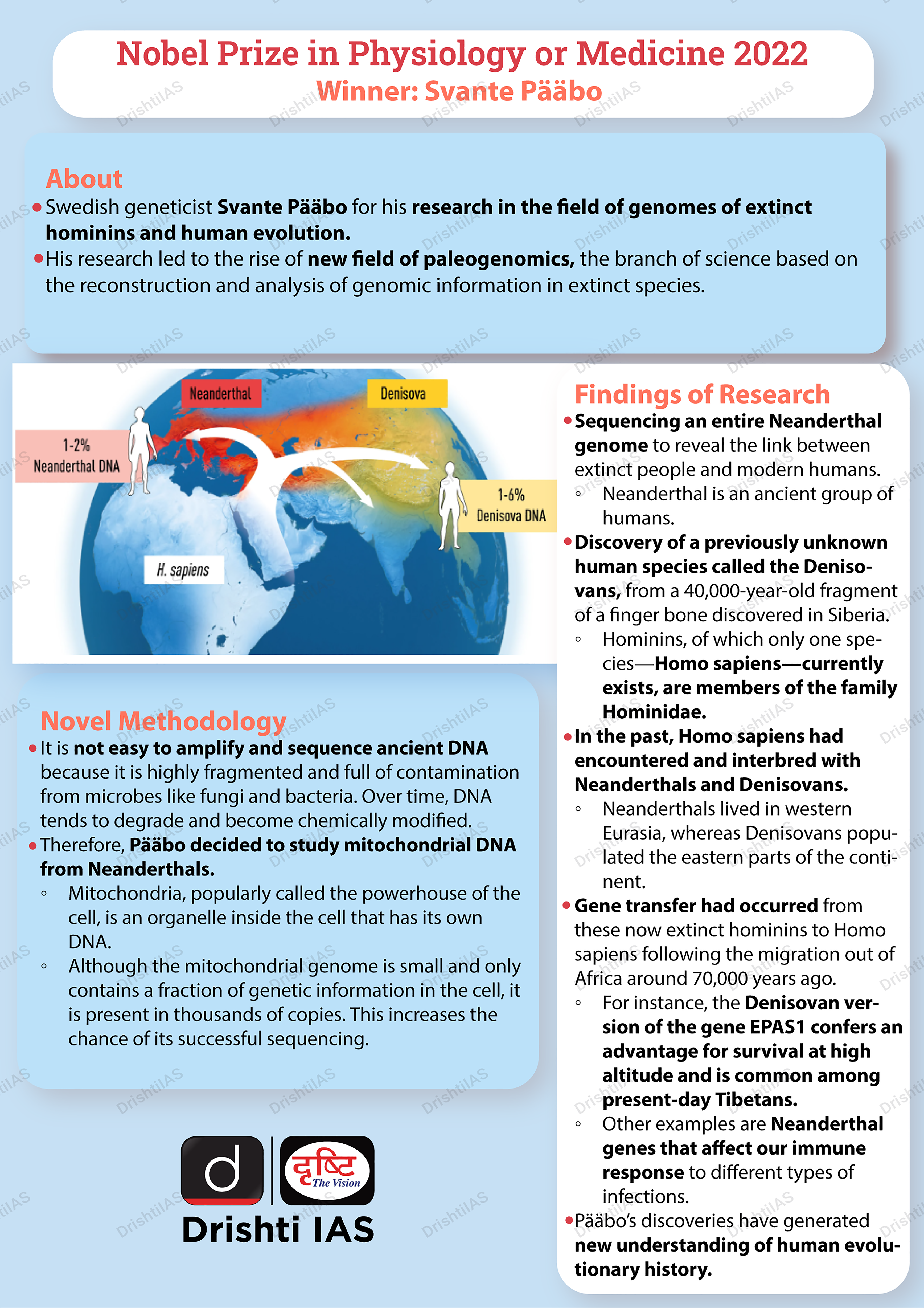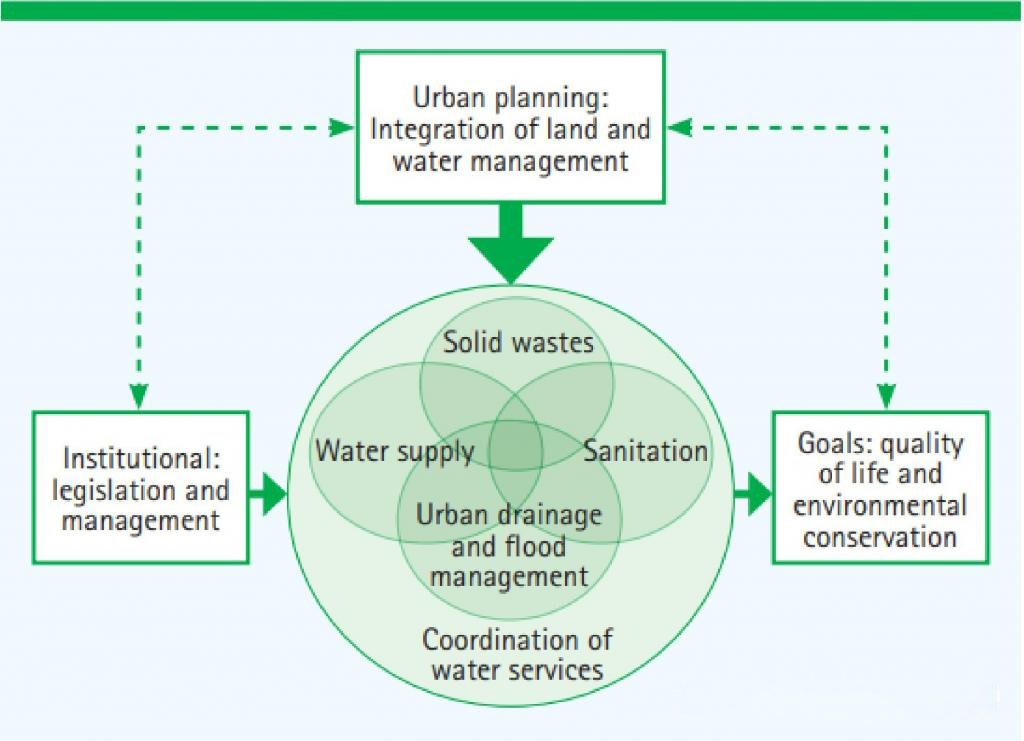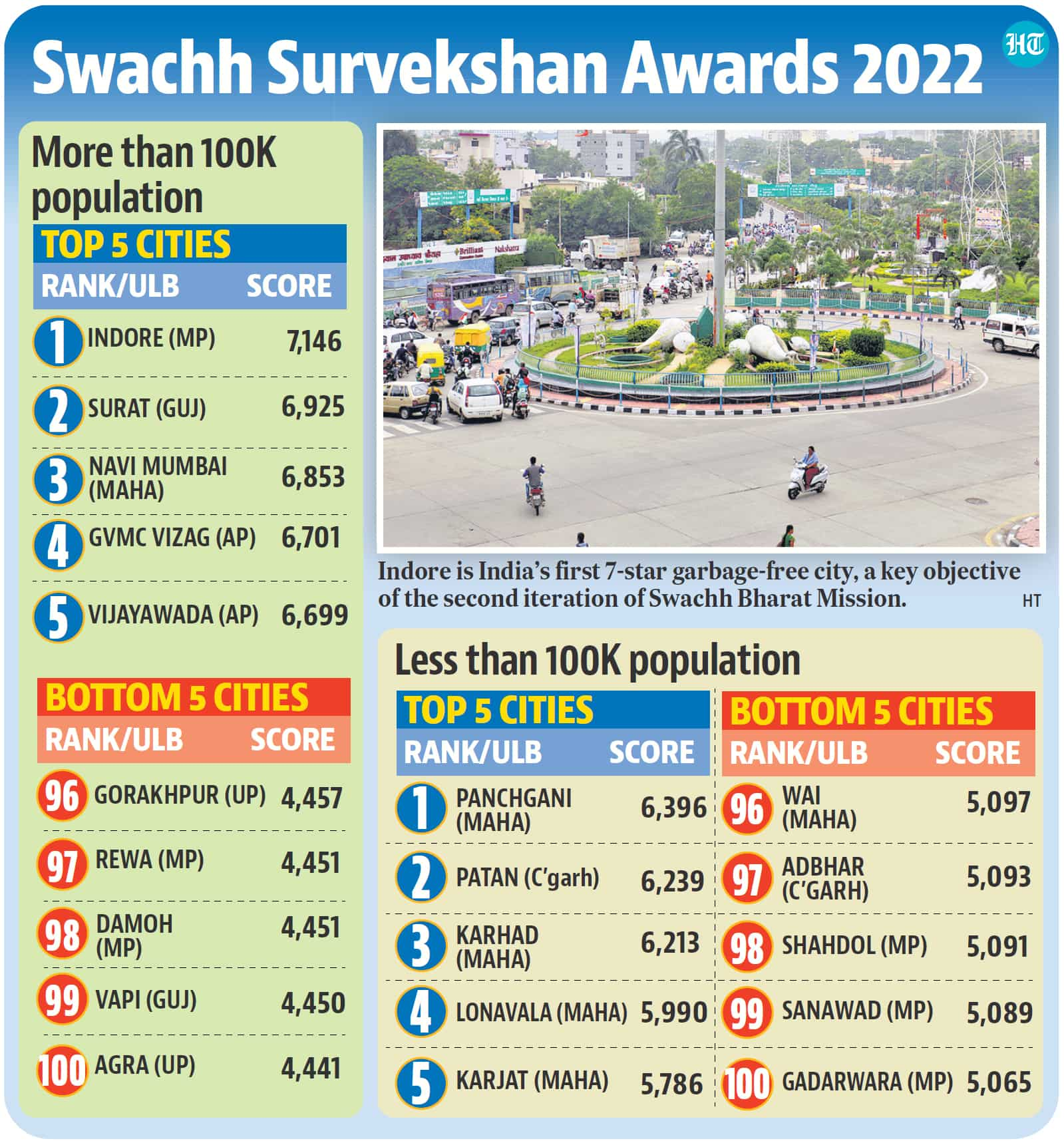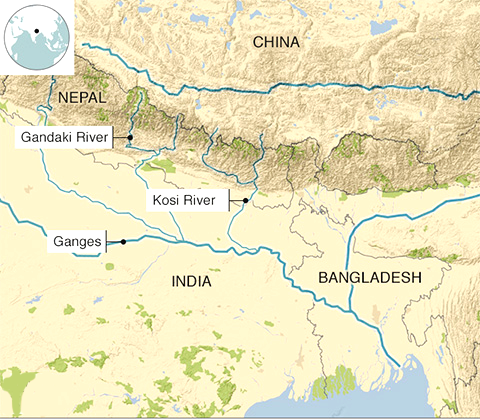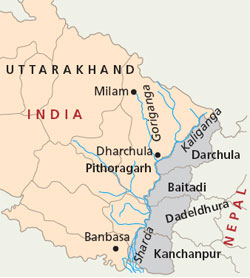Infographics
Infographics
Governance
Holistic Water Management System
For Prelims: Sustainable Groundwater Management, Eutrophication, Swachh Bharat Mission, Jal Jeevan Mission, Food Insecurity.
For Mains: Integrated Urban Water Management System, Challenges Regarding Water Management in India.
Why in News?
With the rapid growth of cities, water demand has exponentially increased. Even as aspirations cause people to migrate to urban areas, water depletion and scarcity remains a huge challenge staring at people’s faces in the near future.
What is the Need for a Holistic Water Management System?
- Around 35 % of India’s population lived in urban areas as of 2020, it is expected to double by 2050.
- In urban areas, only 45 % of the demand is met using groundwater resources. Apart from this, climate change, pollution and contamination have also added to the burden on water resources.
- As water demand exceeds supply in most cities, water management needs to undergo a revolution to ensure most urban areas can be self-sufficient in the future.
- In India, there are different water management systems based on utilities like sanitation, urban water, stormwater and wastewater that deal with water-related issues in different localities. Since areas and localities define distribution and water allocation, it is often a challenge to find a unified solution.
- Thus, water management needs to undergo a revolution and Integrated Urban Water Management (IUWM) system for reliable supply is ensured in most urban areas for self-sufficiency in the future.
What is an Integrated Urban Water Management System?
- About:
- IUWM is a process, which ensures water supply, used water management, sanitation and stormwater management can be planned in line with economic development and land use.
- This holistic process makes coordination among water departments easier at the local level.
- It also helps cities adapt to climate changes and manage water supply more efficiently.
- Approaches:
- Collaborative Action:
- Clear coordination amongst all the stakeholders, it is easily defined and prioritizes accountability.
- While effective legislation will help guide local authorities, engaging local communities will lead to faster solutions in water management.
- Shift in Perception of Water:
- It is essential to understand how water is inseparable in its connection to economic development, city infrastructure and land use.
- Understanding Water as a Resource:
- Water is a resource for various end goals thus it will be easier to treat different kinds of water based on agricultural, industrial and environmental purposes.
- Customized Solutions for Different Cities:
- IUWM focuses on specific contexts and local requirements and prioritizes a rights-based solution approach over a one-size-fits-all approach.
- Collaborative Action:
What are the Challenges Regarding Water Management in India?
- Potential Rural-Urban Conflict:
- Cities are rapidly expanding as a result of rapid urbanisation, and a large influx of migrants from rural areas has increased the per capita use of water in cities, which is causing water to be transferred from rural reservoirs to urban areas to meet the deficit.
- Ineffective Waste Water Management:
- In a highly water-stressed environment, the inefficient use of wastewater is leaving India unable to make the most economical use of its resources. In cities, most of this water is in the form of greywater.
- According to a recent report published by the Central Pollution Control Board (March 2021), India’s current water treatment capacity is 27.3% and the sewage treatment capacity is 18.6% (with another 5.2% capacity being added).
- Food Security Risk:
- Crops and livestock need water to grow. Water is used extensively for irrigation in agriculture and serves as a major source of domestic consumption. Given the combination of rapidly declining groundwater levels and inefficient river water management, food insecurity is likely to follow.
- The impacts of water and food scarcity can undermine basic livelihoods and exacerbate social tensions.
- Rising Water Pollution:
- There is a large amount of domestic, industrial, and mining waste that is discharged into water bodies, which can lead to waterborne illnesses. Moreover, water pollution can lead to eutrophication, which can significantly impact aquatic ecosystems.
- Overexploitation of Groundwater:
- 256 of 700 districts in India have reported critical or overexploited groundwater levels according to the most recent study of the Central Ground Water Board.
- A NITI Aayog report says that India is suffering from the worst water crisis in its history, citing that, 21 cities- including Bangalore, Delhi, Hyderabad and Chennai- probably exhausted their groundwater resources in 2021
- Wells, ponds and tanks are drying up as groundwater resources come under increasing pressure due to over-reliance and unsustainable consumption. This has escalated the water crisis.
What are the Related Initiatives?
Way Forward
- With climate change and population growth leading to increased water use, new solutions have to be conceived for better urban water management. More people in different local contexts need to be made aware of the challenges.
- Similarly, there are changes required in institutions like local departments that play a crucial role. It is essential that holistic and systemic solutions are implemented to solve water issues.
UPSC Civil Services Examination, Previous Year Questions (PYQs)
Prelims
Q. What are the benefits of implementing the ‘Integrated Watershed Development Programme’? (2014)
- Prevention of soil runoff
- Linking the country’s perennial rivers with seasonal rivers
- Rainwater harvesting and recharge of groundwater table
- Regeneration of natural vegetation
Select the correct answer using the code given below:
(a) 1 and 2 only
(b) 2, 3 and 4 only
(c) 1, 3 and 4 only
(d) 1, 2, 3 and 4
Ans: (c)
- The Integrated Watershed Development Programme (IWDP) is implemented by the Department of Land Resources of Ministry of Rural Development.
- The main objective of IWDP is to restore ecological balance by harnessing, conserving and developing degraded natural resources such as soil, vegetative cover and water. Statements 1, 3 and 4 are describing ways to conserve and develop soil, water and vegetative crop and are included in IWDP.
- Watershed development refers to the conservation, regeneration and the judicious use of all the resources – natural (like land, water, plants, animals) and human – within the watershed area. Hence, 1, 3 and 4 are correct.
- However, the linking of the country’s perennial with seasonal rivers is not done under the watershed development programme. Hence, 2 is not correct.
- Therefore, option (c) is the correct answer.
Q. On the planet earth, most of the freshwater exists as ice caps and glaciers. Out of the remaining freshwater, the largest proportion (2013)
(a) is found in atmosphere as moisture and clouds
(b) is found in freshwater lakes and rivers
(c) exists as groundwater
(d) exists as soil moisture
Ans: (c)
Mains
Q. Enumerate the National Water Policy of India. Taking river Ganges as an example, discuss the strategies which may be adopted for river water pollution control and management. What are the legal provisions of management and handling of hazardous wastes in India? (2013)
Q. “The ideal solution of depleting ground water resources in India is water harvesting system”. How can it be made effective in urban areas? (2018)
Q. What is water stress? How and why does it differ regionally in India? (2019)


Governance
Swachh Survekshan Awards 2022
For Prelims: Swachh Survekshan 2022, Swachh Bharat Mission.
For Mains: Welfare Schemes, Growth and Development.
Why in News?
Recently, the President awarded Indore as the cleanest city for the sixth consecutive year as part of the Azadi@75 Swachh Survekshan 2022, hosted as part of the Swachh Bharat Mission- Urban 2.0.
- Indore further emerged as India’s first 7-star Garbage Free city, while Surat, Bhopal, Mysuru, Navi Mumbai, Vishakhapatnam, and Tirupati earned 5-star Garbage Free certifications.
What are Swachh Survekshan Awards?
- About: Swachh Survekshan has been conducted since 2016 and is the world’s largest urban sanitation and cleanliness survey.
- It has been instrumental in fostering a spirit of healthy competition among towns and cities to improve their service delivery to citizens and towards creating cleaner cities.
- It is conducted under the ambit of the Swachh Bharat Mission (Urban),
- Goal: The primary goal of Swachh Survekshan is to encourage large-scale citizen participation and create awareness amongst all sections of society about the importance of working together toward making towns and cities better places to reside in.
- Nodal Ministry: Ministry of Housing and Urban Affairs (MoHUA).
What are the Key Highlights of Swachh Survekshan Awards 2022?
- Cleanest City:
- More than 1 lakh Population: Indore, the city of lakes and palaces, walked away with the Cleanest City title, while Surat was adjudged the second cleanest city, for the second time in a row, Navi Mumbai bagged the third spot.
- Less than 1 lakh Population: Panchgani and Karad from Maharashtra bagged the first and third positions respectively, while Patan from Chhattisgarh bagged the second position.
- Best Ganga Town: Haridwar in Uttarakhand received the award for the best Ganga town in more than one lakh population cities.
- Fast Mover City Award: Shivamogga in Karnataka.
- Cleanest States:
- States with More than 100 Urban Local Bodies: Madhya Pradesh emerged as the ‘Cleanest State’, Chattisgarh in second place and third in Maharashtra.
- States with less than 100 Urban Local Bodies: Tripura emerged as the Cleanest State. Jharkhand and Uttarakhand received the second and third spots respectively.
What is Swachh Bharat Mission 2.0?
- SBM-U 2.0, announced in Budget 2021-22, is the continuation of SBM-U first phase.
- The government is trying to tap safe containment, transportation, disposal of faecal sludge, and septage from toilets. It will be implemented over five years from 2021 to 2026 with an outlay of Rs. 1.41 lakh crore.
- It focuses on source segregation of garbage, reduction in single-use plastic and air pollution, by effectively managing waste from construction and demolition activities and bioremediation of all legacy dump sites.
- Under this mission, all wastewater will be treated properly before it is discharged into water bodies, and the government is trying to make maximum reuse a priority.


Indian History
Ethical Values from the Life of Lal Bahadur Shastri
For Mains: Ethical Values from the Life of Lal Bahadur Shastri
Why in News?
In 2nd October, India celebrates the 118th birth anniversary of Lal Bahadur Shastri, the nation’s second Prime Minister.
How can we Learn from Shastri's Life?
- Against the Caste System:
- Lal Bahadur Shrivastava was the son of Ramdulari Devi and Sharada Prasad Shrivastava. However, being against the prevailing caste system, he decided to drop his surname.
- The title ‘Shastri’ was given after he completed his graduation at Kashi Vidyapeeth, Varanasi in 1925.
- The title ‘Shastri’ refers to a ‘scholar’ or a person, adept in the holy scriptures. Shastri in this way showed a broad outlook at a very young age.
- Taking Responsibilities during Adverse Times:
- He was one of the giants in public life, who always took the country’s myriad responsibilities on his shoulders.
- In adverse situations, too, he came forward, held himself accountable, and demonstrated the qualities of a true leader.
- He served as the Railway Minister in Jawaharlal Nehru’s Cabinet and was so conscientious that he resigned following a train accident at Ariyalur in Tamil Nadu in 1956.
- His gesture was hailed by all including Nehru, whom he considered as his “hero”.
- Inseparable Public and Private Life:
- In 1965, India was embroiled in war with Pakistan and the country was facing acute food shortage.
- There was added pressure with the United States threatening to cut supplies.
- Faced with the crisis, Lal Bahadur Shastri announced to his family one evening that for the next few days they would all give up on their evening meal.
- In 1965, India was embroiled in war with Pakistan and the country was facing acute food shortage.
- Morality:
- It is said that he had a Chevrolet Impala car for official use, which his son once used for a drive.
- When Shastri learned about it, he asked his driver to check the distance the car was used for and later deposited the money in the government account.
- It is said that he had a Chevrolet Impala car for official use, which his son once used for a drive.
What Makes Shastri's Values Relevant Today?
- Indians should emulate the simplicity, humility, humanism, austerity, hard work, dedication, and nationalism displayed by the unassuming second prime minister of India today.
- Shastri's maiden Independence Day speech in 1964 is as relevant today as it was then, as he emphasized character and moral strength, which has acquired special significance as we witness all-round degeneration of values.

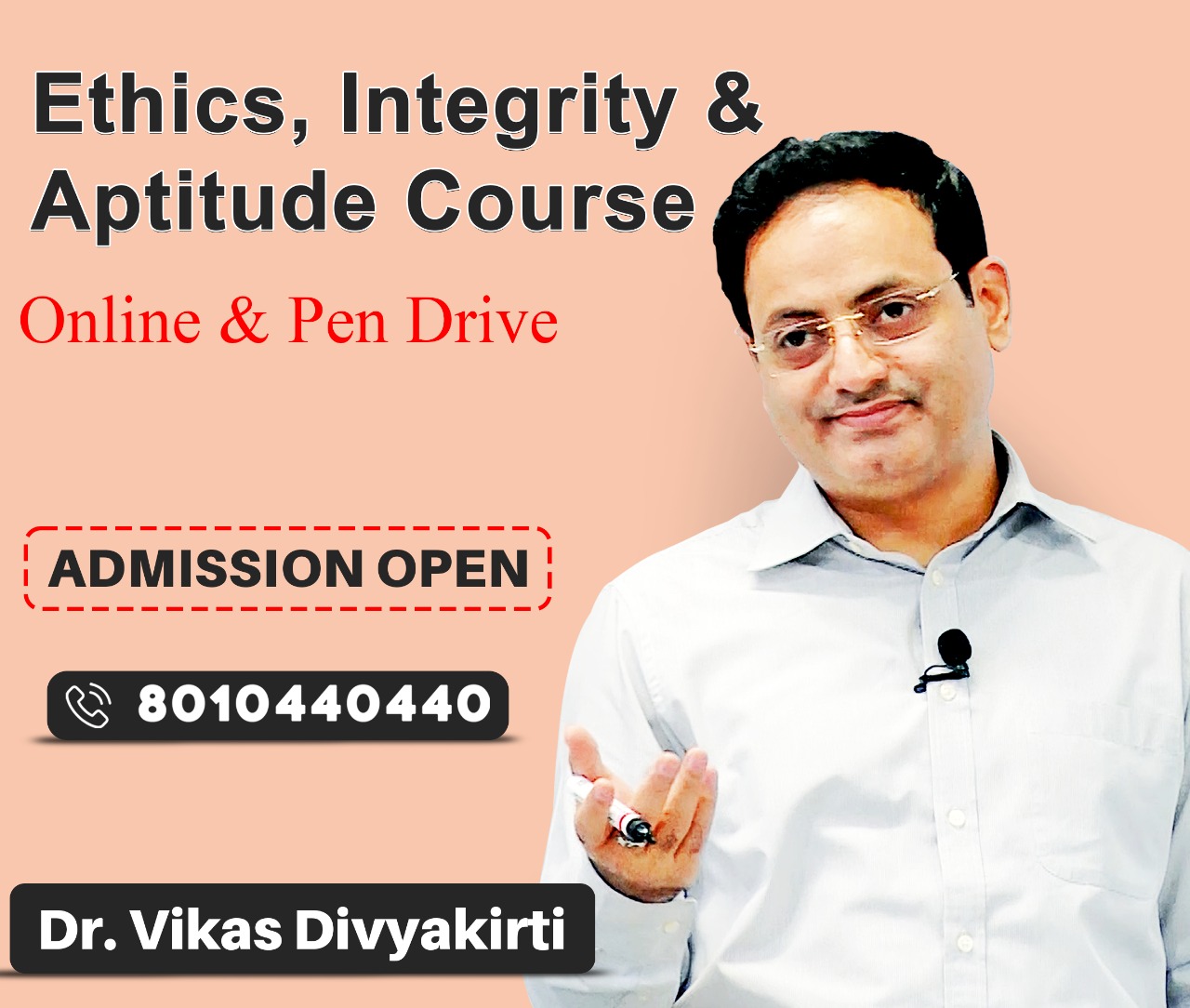
Agriculture
Transforming Agrifood Systems with Forests
For Prelims: FAO, United Nations, deforestation
For Mains: Food Security, Government Policies and Interventions
Why in News?
Recently, the Food and Agriculture Organization (FAO) of the United Nations released a report on deforestation, livestock grazing and farmer field schools.
- FAO released the report at FAO-Global Landscapes Forum digital forum Transforming agrifood systems with forests.
- A Farmer Field School brings together a group of farmers, livestock herders or fisherfolk, to learn how to shift towards more sustainable production practices, by better understanding complex agro-ecosystems and by enhancing ecosystem services.
What are the Highlights of the Report?
- Food demand to support the global population will be 50% more in 2050 compared with 2012.
- Production will need 165 to 600 million more hectares of land for crop and livestock production, much of which is currently covered by forests and other critical ecosystems.
- From 2000-2018, almost 90% of deforestation globally was attributable to agricultural expansion.
- This negatively impacts associated ecosystem services such as carbon sequestration and biodiversity.
- The world has lost 420 million hectares of forests in the last two decades, as per FAO’s Global Forest Resources Assessment 2022.
- Forests are vital to slow the rate of deforestation, which stood at 11 million ha per year from 2000-2010.
What are the Recommendations?
- 'Forest Positive’ Food Production:
- The need of the hour is to build sustainable global agrifood systems based on the synergies between agriculture and forests that provide a win-win outcome for both sectors.
- Governments need to create conditions for farmers to change their practices to maximise production while minimising the impact on forests and biodiversity.
- Governments need to pay special attention to smallholder farmers, who produce roughly 35% of the world’s food, but often live in poverty and cannot afford the costs or interruptions to income incurred through changing the way they work.
- Restoring Degraded Land:
- Properly integrated grazing can play a vital role in restoring degraded land with trees, halting desertification and improving wildfire prevention in drylands.
- Drylands are home to about 25% of the global population, contain 50% of the world’s livestock, 27% of the world’s forests and are where about 60% of the world’s food production takes place.
- Silvopastrolism (combining animal grazing and trees) can also help enhance local communities food security and income by preventing land degradation.
- Woody plants in drylands provide animal feed, timber and fruit as well as help to increase biodiversity and regulate soil and water cycles.
- At the same time, grazing livestock helps control vegetation, reduce the risk of wildfires, accelerate nutrient cycles and improve soil fertility.
- Properly integrated grazing can play a vital role in restoring degraded land with trees, halting desertification and improving wildfire prevention in drylands.
- Part of the Solution:
- As part of an integrated landscape approach utilizing agroforestry, landscape planners and decision-makers should consider livestock as part of the solution and carefully restore open tree cover (when tree cover is between 30 and 70%).
What is FAO?
- About:
- FAO is a specialized agency of the United Nations that leads international efforts to defeat hunger.
- World Food Day is celebrated every year on 16th October to mark the anniversary of the founding of the FAO in 1945.
- It is one of the UN food aid organisations based in Rome (Italy). Its sister bodies are the World Food Programme and the International Fund for Agricultural Development (IFAD).
- Initiatives Taken:
- Globally Important Agricultural Heritage Systems (GIAHS).
- Monitors the Desert Locust situation throughout the world.
- The Codex Alimentarius Commission or CAC is the body responsible for all matters regarding the implementation of the Joint FAO/WHO Food Standards Programme.
- The International Treaty on Plant Genetic Resources for Food and Agriculture.
- Flagship Publications:
- The State of World Fisheries and Aquaculture (SOFIA)
- The State of the World's Forests (SOFO)
- The State of Food Security and Nutrition in the World (SOFI)
- The State of Food and Agriculture (SOFA)
- The State of Agricultural Commodity Markets (SOCO)
- World Food Price Index
UPSC Civil Services Examination, Previous Year Questions (PYQs)
Q. The FAO accords the status of ‘Globally Important Agricultural Heritage System (GIAHS)’ to traditional agricultural systems. What is the overall goal of this initiative? (2016)
- To provide modern technology, training in modern farming methods and financial support to local communities of identified GIAHS so as to greatly enhance their agricultural productivity.
- To identify and safeguard eco-friendly traditional farm practices and their associated landscapes, agricultural biodiversity and knowledge systems of the local communities.
- To provide Geographical Indication status to all the varieties of agricultural produce in such identified GIAHS.
Select the correct answer using the code given below:
(a) 1 and 3 only
(b) 2 only
(c) 2 and 3 only
(d) 1, 2 and 3
Ans: (b)

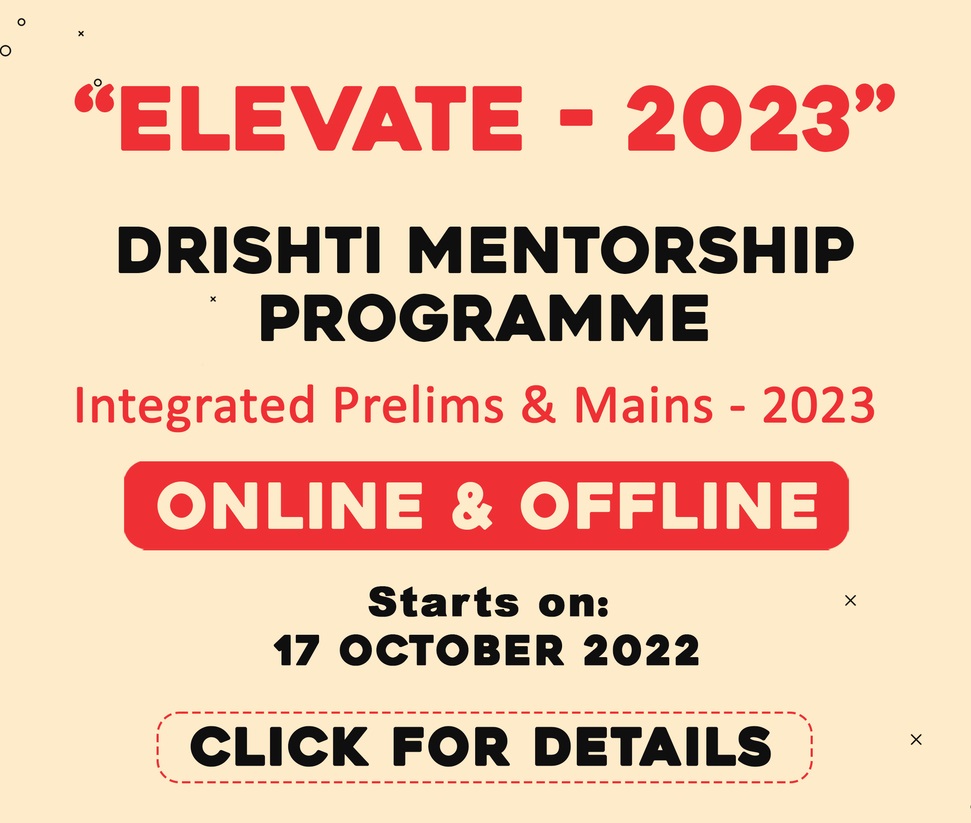
International Relations
Sapta Kosi High Dam Project
For Prelims: India Nepal Relations, Sapta Kosi High Dam Project, Mahakali Treaty, India Nepal Border
For Mains: India-Nepal Relations and recent developments, Sapt Kosi High Dam Project, Mahakali Treaty
Why in News?
Recently, India and Nepal have agreed to take forward the Sapta Kosi high dam project through further studies.
- Senior officials of the two sides have met and reviewed the bilateral water-sector cooperation, including the implementation of the Mahakali Treaty.
What is Sapta Kosi High Dam Project & Mahakali Treaty?
-
-
Sapta Kosi High Dam is a multipurpose project proposed to be constructed on the Saptakoshi River of Nepal (Known as Kosi River in India).
-
The project is primarily aimed to control floods in south-east Nepal and northern Bihar and to generate hydropower.
-
The project will provide irrigation, control floods and generate 3,000 MW of electricity.
-
-
- The Mahakali Treaty was signed in 1996 over the integrated development of the Mahakali River, including Sarada Barrage, Tanakpur Barrage and Pancheshwar project.
- Mahakali River is also known as Sharda River or Kali Ganga in Uttarakhand.
- It joins Ghagra river in Uttar Pradesh, which is a tributary of Ganga.
What do we know about the Kosi River System?
-
The Kosi is a trans-boundary river which flows through Tibet, Nepal and India.
-
It has its source in Tibet that includes the world's highest upland, it then drains a large part of Nepal before emerging onto the Gangetic plains.
-
Its three major tributaries: the Sun Kosi, Arun and Tamur meet at one point just upstream of a 10 km gorge cut through the Himalayan foothills.
-
The river crosses into northern Bihar, India where it branches into distributaries before joining the Ganges near Kursela in Katihar district.
-
The Kosi carries the maximum amount of silt and sand after the Brahmaputra in India.
-
It is also known as the “Sorrow of Bihar” as the annual floods affect about 21,000 sq. km. of fertile agricultural lands thereby disturbing the rural economy.
What are some other Recent Developments in India Nepal Relations?
-
Build Own Operate and Transfer (BOOT):
-
A Memorandum of Understanding (MoU) was signed between the Government of Nepal and Sutlej Jal Vikas Nigam (SJVN) Limited for the project in 2008 for execution on a Build Own Operate and Transfer (BOOT) basis for a period of 30 years including five years of the construction period.
-
-
Hydropower Projects:
-
Nepal also invited Indian companies to invest in the West Seti hydropower project in Nepal.
-
-
Cross-border Rail Link:
-
The operationalisation of the 35 kilometers cross-border rail link from Jayanagar (Bihar) to Kurtha (Nepal) will be further extended to Bijalpura (Nepal) and Bardibas (Nepal).
-
UPSC Civil Services Examination, Previous Year Questions (PYQs)
Q. Consider the following pairs: (2016)
| Community sometimes mentioned in the news | In the affairs of |
| 1. Kurd | Bangladesh |
| 2. Madhesi | Nepal |
| 3. Rohingya | Myanmar |
Which of the pairs given above is/are correctly matched?
(a) 1 and 2
(b) 2 only
(c) 2 and 3
(d) 3 only
Ans: (c)
Exp:
-
Kurd: They are one of the indigenous peoples of the Mesopotamian plains and the highlands in what are now South-eastern Turkey, North-eastern Syria, northern Iraq, North-western Iran and South-western Armenia. They also adhere to a number of different religions and creeds, although the majority is Sunni Muslims. Hence, pair 1 is not correctly matched.
-
Madhesi: It is an ethnic group living mainly in the southern plains of Nepal, close to the border with India. Madhesis are predominantly Hindus with some Muslims and Christians. Hence, pair 2 is correctly matched.
-
Rohingya: They are an ethnic group, largely comprising Muslims, who predominantly live in the Western Myanmar province of Rakhine. They speak a dialect of Bengali, as opposed to the commonly spoken Burmese language. According to Myanmar authorities, they are not the authorized citizens of the country. Hence, pair 3 is correctly matched.
-
Therefore, option (c) is the correct answer.


Important Facts For Prelims
World Habitat Day
Why in News?
The United Nations has designated the first Monday of October of every year as World Habitat Day (3rd October 2022) to reflect on the state of our habitats, and on the basic right of all to adequate shelter.
- The Ministry of Housing and Urban Affairs (MoHUA) celebrated World Habitat Day 2022 at Vigyan Bhawan.
What is World Habitat Day?
- About:
- The Day is intended to remind the world that we all have the power and the responsibility to shape the future of our cities and towns.
- World Habitat Day 2022 seeks to draw attention to the growing inequalities and vulnerabilities that have been exacerbated by the Triple ‘C’ Crises: COVID-19, Climate and Conflict.
- Theme of WHD 2022:
- “Mind the Gap. Leave No One Behind and No Place Behind.”
- The theme serves a strong reminder that “we cannot leave behind any citizen and any place as we build towards a more resilient future.”
- “Mind the Gap. Leave No One Behind and No Place Behind.”
- History:
- In 1985 the United Nations designated the first Monday of October every year as World Habitat Day.
- World Habitat Day was first celebrated in 1986 with the theme “Shelter is My Right”.
- Nairobi (Kenya) was the host city for the observance that year.
- Habitat Scroll of Honour Award:
- The Habitat Scroll of Honour Award was launched by the United Nations Human Settlements Programme (U.N.-Habitat) in 1989.
- It is currently the most prestigious human settlements award in the world.
- Its aim is to acknowledge initiatives which have made outstanding contributions in various fields such as shelter provision, highlighting the plight of the homeless, leadership in post conflict reconstruction etc.
What are Key Highlights of WHD Celebrations at Vigyan Bhawan?
- Schemes like Pradhan Matri Awas Yojana (PMAY), PM SVANidhi scheme, Deendayal Antyodaya Yojana-National Urban Livelihood Mission (DAY-NULM), Swachh Bharat Mission have been conceptualised with focus on vulnerable and marginalised sections.
- India will be able to make the central pledge of Sustainable Development Goals, i.e. ‘leave no one behind’ a reality by 2030.
- Stress on making cities cleaner, greener and economically, socially and environmentally sustainable for the next 25 years.
What are India’s Initiatives for Urban & Rural Management?
- Smart Cities
- AMRUT Mission
- Pradhan Mantri Garib Kalyan Yojana
- Mahatma Gandhi National Rural Employment Guarantee Act (MGNREGA) 2005
- Deen Dayal Antyodaya Yojana – National Rural Livelihoods Mission (DAY-NRLM)
- Pradhan Mantri Gram Sadak Yojana (PMGSY)
UPSC Civil Services Examination Previous Year Question:
Q. With reference to the role of UN-Habitat in the United Nations programme working towards a better urban future, which of the statements is/are correct? (2017)
- UN-Habitat has been mandated by the United Nations General Assembly to promote socially and environmentally sustainable towns and cities to provide adequate shelter for all.
- Its partners are either governments or local urban authorities only.
- UN-Habitat contributes to the overall objective of the United Nations system to reduce poverty and to promote access to safe drinking water and basic sanitation.
Select the correct answer using the code given below:
(a) 1, 2 and 3
(b) 1 and 3 only
(c) 2 and 3 only
(d) 1 only
Ans: (b)
Exp:
- The United Nations Human Settlements Programme (UN-Habitat), established in 1978 by the United Nations General Assembly (UNGA), is the lead agency within the UN system for coordinating activities in the field of human settlement development. It is headquartered in Nairobi, Kenya. Hence, statement 1 is correct.
- UN-Habitat partners comprises of national governments, local authorities, non-governmental organizations (NGOs), community organizations and the private sector. Hence, statement 2 is not correct.
- UN-Habitat focuses on the following priority areas:
- Shelter and social services;
- Urban management;
- Environment and infrastructure;
- Assessment, monitoring and information.
- UN-Habitat aims to achieve the Millennium Declaration’s Goal that envisages improvement of the lives of at least 100 million slum dwellers by the year 2020 through focusing on urban governance, housing, environmental management, disaster mitigation, post-conflict rehabilitation, urban safety, water management and poverty reduction. Hence, statement 3 is correct.
- Therefore, option (b) is the correct answer.


Important Facts For Prelims
Alzheimer Disease
Why in News?
Researchers have discovered a drug named Lecanemab that reduces cognitive decline in patients with early Alzheimer's, making it one of the first neuroprotective treatments for the disease.
What is the Significance of the Findings?
- There are a few pills that improve memory in early stages but they do not help in the other facets of Alzheimer’s. There is certainly a need for such neuro-protective drugs for dementia and there are several drugs in the pipeline.
- The increasing lifespan and very high burden of diseases, such as diabetes, hypertension, and obesity, are expected to “dramatically” increase the prevalence of dementia in India.
- Dementia is an umbrella term for a group of disorders that lead to impaired memory, decision-making and social skills.
- The Dementia in India report 2020 estimates that there are 5.3 million people over the age of 60 years living with dementia in India, with the prevalence projected to increase to 14 million by 2050.
What is Alzheimer’s Disease?
- About:
- It is a neurological disorder which causes brain cells to degenerate and die. This leads to loss of memory, problems with words in speaking or writing, poor judgment, changes in mood and personality, confusion with time or place, etc.
- At the first stage, these symptoms are mild but they become more severe with time.
- Alzheimer’s is the most common cause of dementia among older adults.
- Alzheimer's disease is thought to be caused by the abnormal build-up of proteins in and around brain cells. One of the proteins involved is called amyloid, deposits of which form plaques around brain cells and the other protein is called tau.
- Tau is a protein that when it occurs in tangled formations in the brain of Alzheimer patients, disrupts the ability of neurons to communicate with one another in the brain.
- Alzheimer’s is an incurable disease, as the death of brain cells cannot be reversed.
- Women have a higher risk of having Alzheimer’s disease than men.
- It is a neurological disorder which causes brain cells to degenerate and die. This leads to loss of memory, problems with words in speaking or writing, poor judgment, changes in mood and personality, confusion with time or place, etc.
- Treatment:
- There is currently no known cure for Alzheimer’s disease. Treatment addresses several areas:
- Helping people maintain brain health.
- Managing behavioural symptoms.
- Slowing or delaying symptoms of the disease.
- There is currently no known cure for Alzheimer’s disease. Treatment addresses several areas:


Important Facts For Prelims
Telecom Technology Development Fund (TTDF) Scheme
Why in News?
Recently, the Universal Service Obligation Fund (USOF) launched the Telecom Technology Development Fund (TTDF) Scheme.
- Universal Service Obligation Fund (USOF) is a body under the Department of Telecommunications (DoT) to fund rural and remote digital connectivity.
- The Centre in the draft telecom bill, 2022 has said that the USOF, created under the Indian Telegraph Act of 1885, shall be referred to as the “Telecommunication Development Fund”.
What is the Telecom Technology Development Fund (TTDF) Scheme?
- TTDF aims to fund R&D in rural-specific communication technology applications and form synergies among academia, start-ups, research institutes, and the industry to build and develop the telecom ecosystem.
- The scheme aims to promote technology ownership and indigenous manufacturing, create a culture of technology co-innovation, reduce imports, boost export opportunities and creation of Intellectual Property.
- Under the scheme, USOF is also targeting to develop standards to meet countrywide requirements and create the ecosystem for research, design, prototyping, use cases, pilots, and proof of concept testing, among others.
- The scheme entails grants to Indian entities to encourage and induct indigenous technologies tailor-made to meet domestic needs.
What is the Present Status of the Telecom Sector of India?
- The Telecom industry in India is the second largest in the world with a subscriber base of 1.17 billion as of 2022. India has an overall teledensity of 85.11%.
- The industry’s exponential growth over the last few years is primarily driven by affordable tariffs, wider availability, the roll-out of Mobile Number Portability (MNP), expanding 3G and 4G coverage, and evolving consumption patterns of subscribers.
- The Telecom sector is the 3rd largest sector in terms of Foreign Direct Investment (FDI) inflows, contributing 6.44% of total FDI inflow, and contributes directly to 2.2 million employment and indirectly to 1.8 million jobs.
- Between 2014 and 2021, the FDI inflows in the Telecom sector rose by 150% to USD 20.72 billion from USD 8.32 billion during 2002-2014.
- 100% Foreign Direct Investment (FDI) has now been allowed in the Telecom sector under the automatic route.
- India is on its way to becoming the second-largest smartphone market globally by 2025 with around 1 billion installed devices and is expected to have 920 million unique mobile subscribers by 2025 which will include 88 million 5G connections.
UPSC Civil Services Examination, Previous Year Questions (PYQs)
Q. In India, which of the following review the independent regulators in sectors l ike telecommunications, insurance, electricity, etc.? (2019)
- Ad Hoc Committees set up by the Parliament
- Parliamentary Department Related Standing Committees
- Finance Commission
- Financial Sector Legislative Reforms Commission
- NITI Aayog
Select the correct answer using the code given below:
(a) 1 and 2
(b) 1, 3 and 4
(c) 3, 4 and 5
(d) 2 and 5
Ans: (a)
Exp:
- Parliamentary Committees are of two kinds – Standing Committees and Ad Hoc Committees. The former are elected or appointed every year or periodically and their work goes on, more or less, on a continuous basis. The latter are appointed on an adhoc basis as the need arises and they cease to exist as soon as they complete the task assigned to them.
- In India, there are 24 Department Related Standing Committees that comprise members from both Houses of Parliament. These committees are Ministry specific, and may review the working of regulators within their respective departments. For example, in August 2012, the Standing Committee on Energy presented a report on the functioning of the ‘Central Electricity Regulatory Commission’. Hence, 2 is correct.
- Ad Hoc Committees set up by the Parliament may examine the working of regulators. For instance, the terms of reference of the Joint Parliamentary Committee (JPC) on the allocation of 2G spectrum include the review of the policy on spectrum pricing and grant of telecom licences. Hence, 1 is correct.
- Role of Finance Commission and NITI Aayog is advisory in nature and they do not review independent regulators. Hence, 3 and 5 are not correct.
- The Financial Sector Legislative Reforms Commission (FSLRC) was constituted by the Ministry of Finance in March, 2011 to comprehensively review and redraw the legislations governing India’s financial system. It has no role in reviewing the independent regulators. Hence, 4 is not correct.
- Therefore, option (a) is the correct answer.



